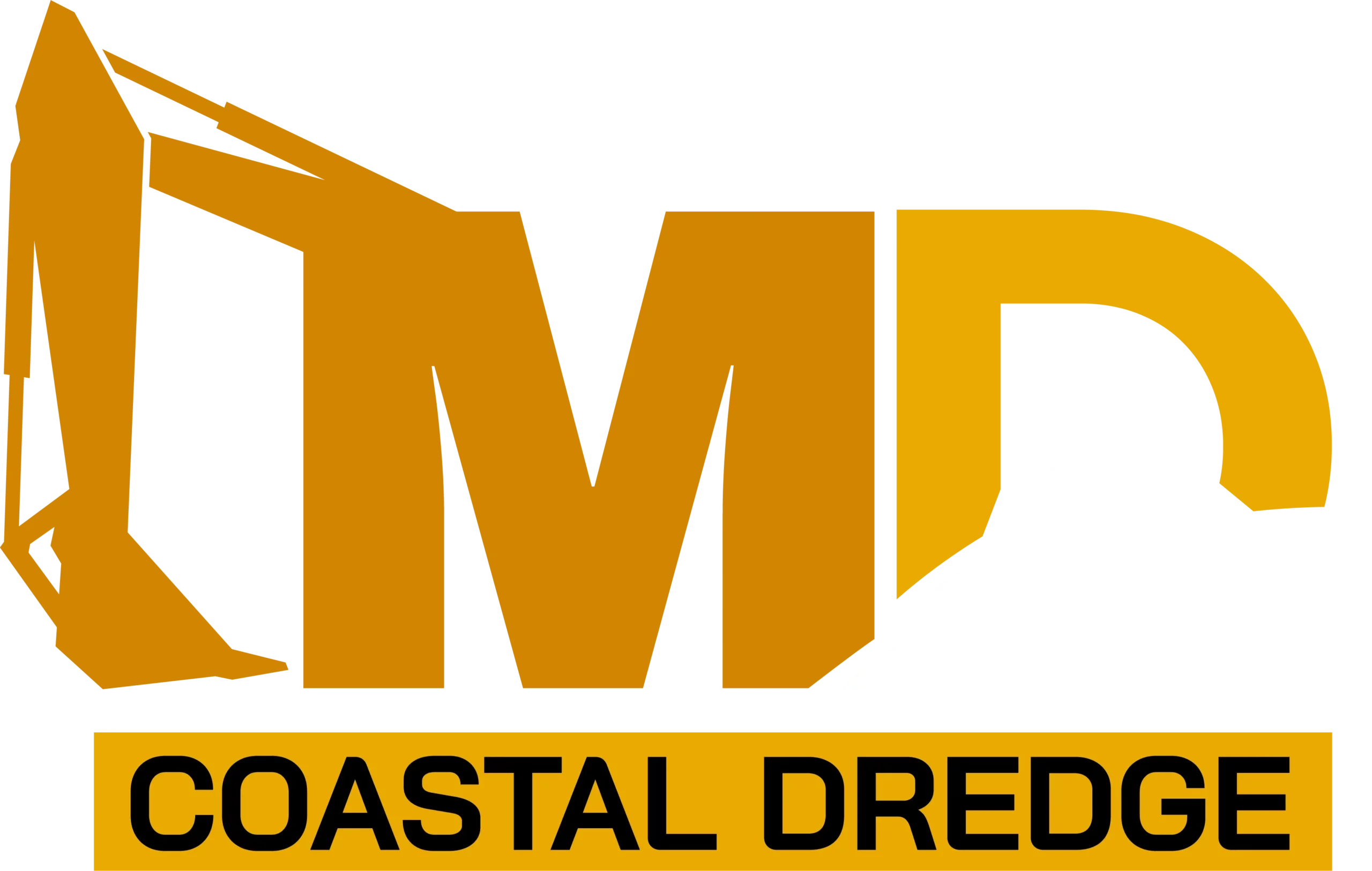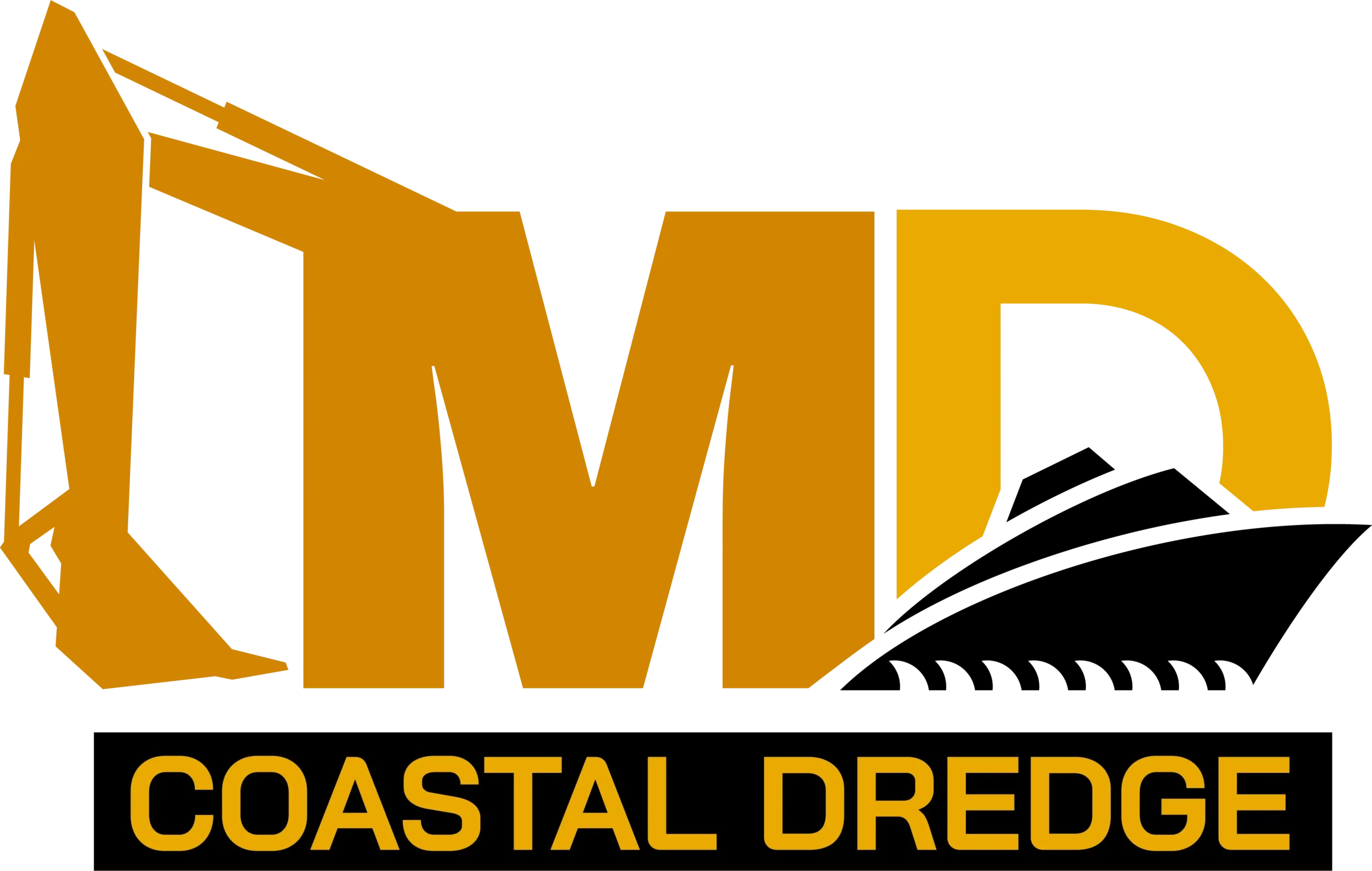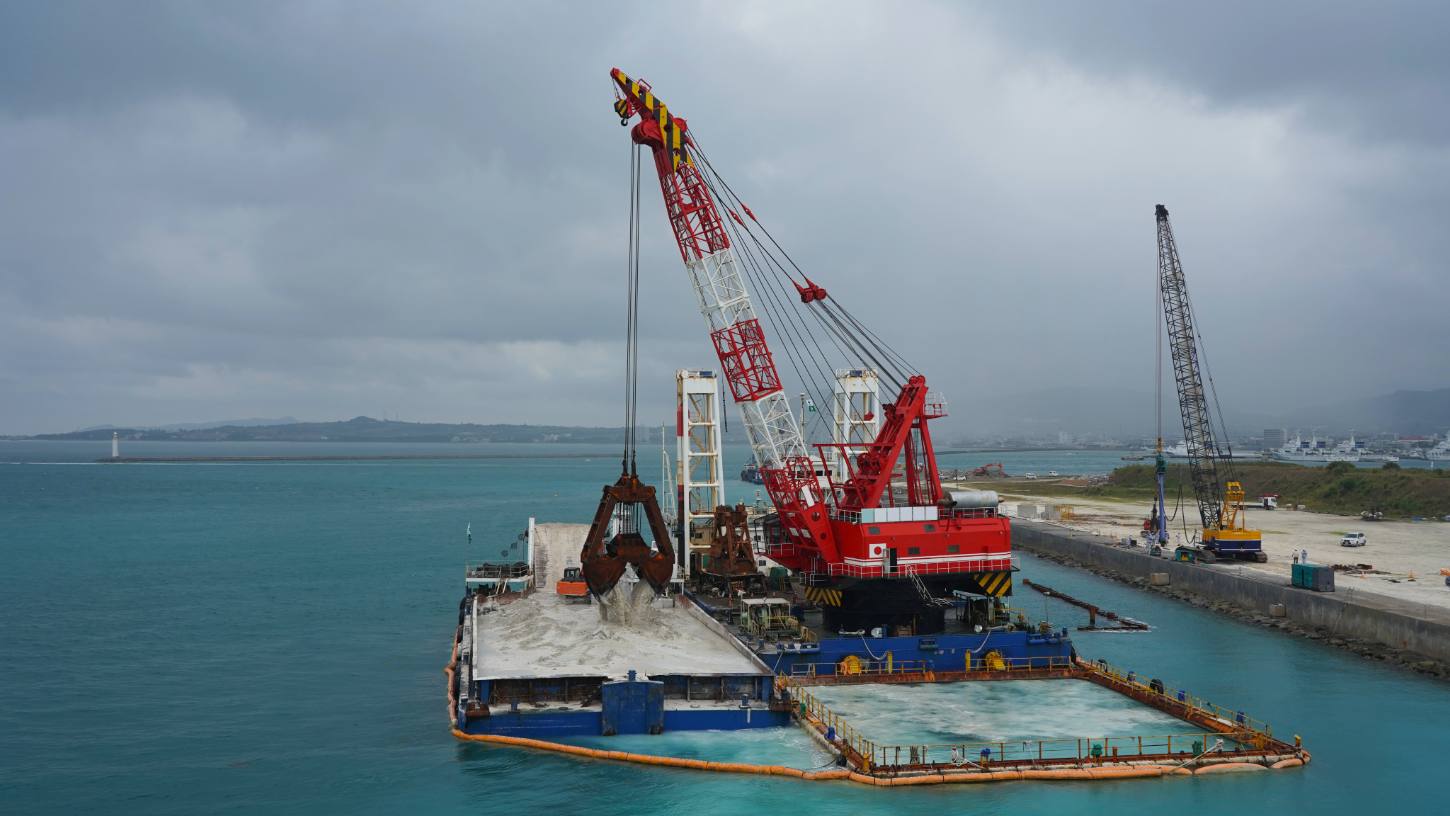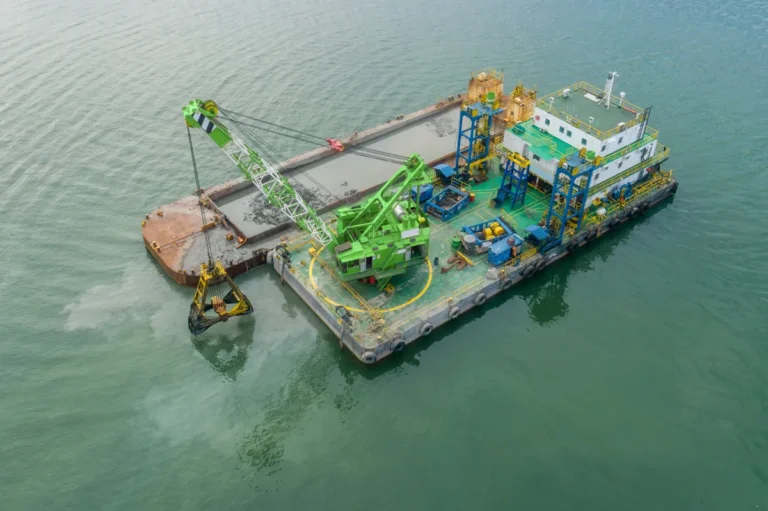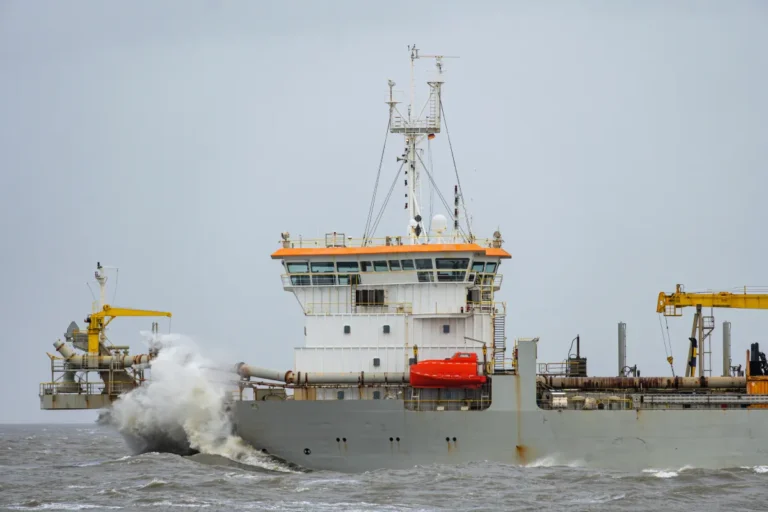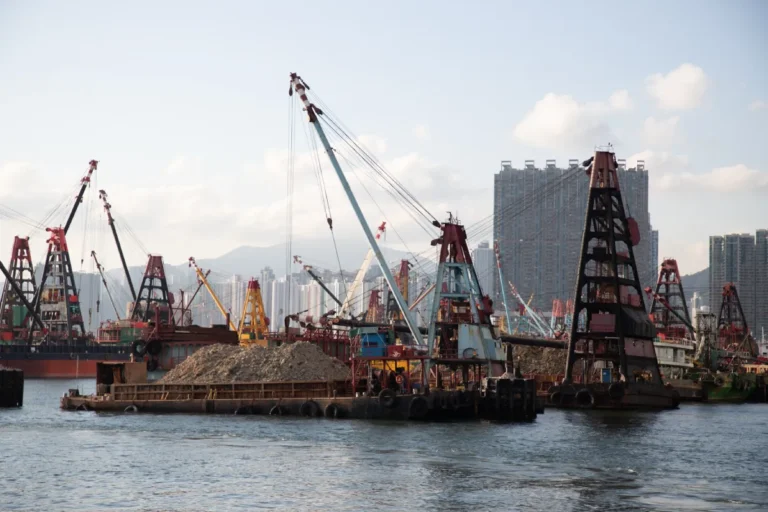Maintenance dredging refers to the regular removal of accumulated sediment, silt, sand, and other debris from the bottom of waterways, ports, and coastal areas. Unlike capital dredging, which involves creating new waterways or significantly altering existing ones, maintenance dredging focuses on preserving the designed depth and navigability of water channels. This essential practice ensures that ports and harbors remain safe and accessible for commercial shipping and recreational boating, preventing disruptions to maritime traffic and commerce.
For port authorities and coastal municipalities, regular harbor dredging is crucial to maintaining efficient and secure maritime operations. Over time, natural sedimentation from rivers, ocean currents, and tidal movements can restrict access to docks, impede vessel movement, and even lead to increased operational costs if left unchecked. Additionally, maintenance dredging plays a vital role in beach reclamation projects, as the extracted sediments are frequently repurposed to combat coastal erosion, replenish beaches, and reinforce shoreline defenses. This sustainable approach not only protects coastal infrastructure but also supports tourism, enhances property values, and preserves local ecosystems.
In this comprehensive guide, readers will gain an in-depth understanding of the techniques and methodologies employed in maintenance dredging, including critical insights into costs, environmental considerations, and innovative practices. You will discover best practices for efficient harbor dredging, explore cost-effective strategies for managing dredging projects, and learn how responsible sediment management contributes to successful beach reclamation initiatives.
Understanding Maintenance Dredging
Maintenance dredging involves the periodic removal of accumulated sediments, such as sand, silt, and organic matter, from the bottoms of existing waterways, harbors, and coastal areas to maintain navigability and ensure safe operations. Its primary goal is to restore these water bodies to their original designed depth, ensuring efficient vessel movement and preventing navigational hazards. Without regular maintenance dredging, ports and harbors risk decreased operational capacity, increased safety risks, and economic losses resulting from delays or restricted access.
While maintenance dredging ensures the continued usability of existing channels and harbors, it significantly differs from capital dredging. Capital dredging is typically a one-time, large-scale operation designed to create new waterways, substantially deepen existing channels, or expand port infrastructure to accommodate larger vessels. In contrast, maintenance dredging is an ongoing, routine process essential for sustaining the usability and accessibility of water routes over time.
Sites commonly requiring maintenance dredging include harbor dredging locations such as commercial ports and marinas, where sediment build-up frequently occurs due to natural processes like tides, currents, and river discharge. Additionally, inland waterways and shipping channels often require dredging to remain navigable for vessels transporting goods and materials. Another critical area is beach reclamation, where sediments recovered through dredging operations are repurposed to replenish eroded beaches, stabilize shorelines, and enhance coastal resilience. Thus, maintenance dredging not only supports navigation and commerce but also provides vital resources for protecting and preserving coastal ecosystems and the infrastructure they support.
Common Techniques in Maintenance Dredging
Effective maintenance dredging relies heavily on choosing the appropriate equipment and methodologies based on specific site conditions, sediment type, and environmental constraints. Two main categories of dredging techniques dominate this field: mechanical dredging and hydraulic dredging.
Mechanical Dredging
Mechanical dredging involves the use of heavy equipment designed to physically excavate and remove sediment from the seabed or the floor of a waterway. Equipment commonly used includes grab dredgers and backhoes, each suitable for specific scenarios:
- Grab Dredgers: Utilize clamshell buckets operated from cranes to scoop sediment from the seabed. These are highly effective in smaller or confined harbor areas where precision dredging is required.
- Backhoe Dredgers: Similar to land-based excavators, these dredgers operate from floating barges, providing significant flexibility and accuracy, especially for shallow water dredging in ports and marinas.
Mechanical dredging techniques are particularly beneficial in scenarios involving contaminated sediments, where precise removal of sediment is essential to minimize environmental impacts.
Hydraulic Dredging
Hydraulic dredging techniques employ pumps to remove sediment by suction and transport it via pipelines. This approach is efficient for larger-scale maintenance dredging projects and is especially suitable for harbor dredging operations requiring continuous sediment removal:
- Cutter Suction Dredgers (CSDs): Equipped with rotating cutter heads that loosen compacted sediment while suction pumps extract and transport it through pipelines. CSDs are ideal for handling cohesive materials such as clay or dense silt commonly found in harbors and waterways.
- Trailing Suction Hopper Dredgers (TSHDs): Vessels designed to dredge sediment while moving, allowing for large-scale operations across expansive harbor areas or shipping channels. TSHDs efficiently manage sand and loose sediment, often used in navigation channel maintenance.
Choosing the Right Method for Harbor Dredging
Selecting the optimal dredging method for harbor dredging depends on several critical factors, including sediment composition, project scale, environmental regulations, and logistical constraints. Hydraulic methods, such as cutter suction and hopper dredgers, are preferred for larger, continuous operations due to their speed and capacity, while mechanical methods offer precision and environmental control in confined or sensitive areas.
Techniques Specifically Suited for Beach Reclamation
Beach reclamation involves replenishing eroded beaches with dredged sand to restore coastlines and support ecological resilience. Hydraulic dredging, particularly trailing suction hopper dredging, is frequently employed due to its ability to transport and evenly distribute large volumes of sediment over extensive coastal areas. Sand pumped ashore is then redistributed along beaches to enhance natural shoreline defenses and support coastal habitat restoration efforts. By strategically selecting and applying these dredging techniques, coastal communities can significantly reduce the impacts of erosion and effectively sustain their shorelines.
Costs Associated with Maintenance Dredging
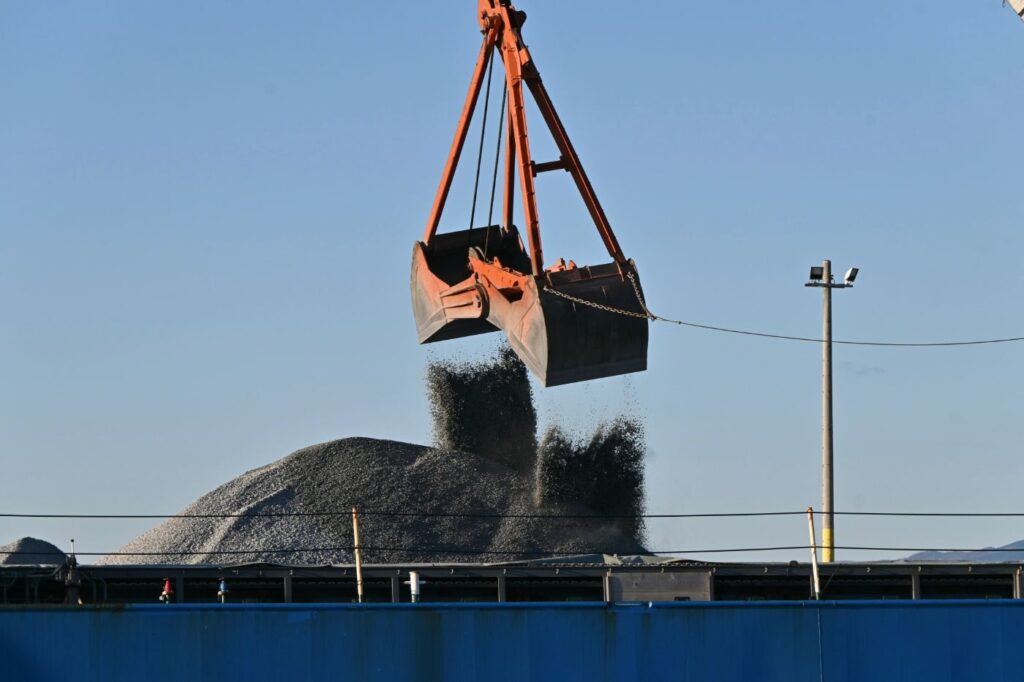
Understanding the various costs associated with maintenance dredging is crucial for accurate budgeting and project planning. Several key factors influence these costs, and recognizing them early can significantly enhance project efficiency and cost-effectiveness.
Key Cost Factors in Maintenance Dredging
Equipment Costs
Equipment represents one of the largest expenses in maintenance dredging projects. Whether you choose mechanical dredgers, such as backhoes and grab dredgers, or hydraulic dredging equipment, like cutter suction dredgers and trailing suction hopper dredgers, the type and size of the machinery greatly influence the budget. Large-scale projects involving extensive harbor dredging often incur higher equipment rental or purchase expenses due to the specialized machinery required.
Labor Expenses
Labor is another substantial cost factor in dredging operations. Crew members, operators, engineers, project managers, and support personnel are essential for safe and effective dredging activities. Skilled labor is particularly critical for operating complex hydraulic dredgers and managing precise sediment removal during sensitive projects, such as those involved in beach reclamation and environmentally sensitive harbor sites.
Disposal and Transportation Fees
Sediment disposal and transportation can significantly impact the total maintenance dredging budget. Contaminated sediments often require specialized handling, disposal methods, or containment sites, all of which add considerable costs. Additionally, transporting dredged sediment from the dredging site to approved disposal areas or sites designated for beneficial reuse, like beach reclamation, can also incur significant expenses.
Cost Optimization Strategies
To achieve cost-effective dredging outcomes, project managers can implement several optimization strategies:
- Efficient Equipment Utilization: Selecting the right dredging equipment for a project’s specific conditions minimizes downtime and unnecessary expenses.
- Accurate Project Estimations: Conducting thorough pre-project surveys to assess sediment quantity and quality helps in accurately estimating dredging costs.
- Beneficial Sediment Reuse: Integrating dredged material into beach restoration or other beneficial reuse projects can help offset disposal costs and improve environmental outcomes.
Hidden Expenses and How to Manage Them
Hidden costs, if not anticipated, can significantly inflate budgets. Common hidden expenses in maintenance dredging projects include unexpected downtime due to equipment breakdowns, weather delays, regulatory compliance fines, and sediment contamination issues. Effective management of these costs involves thorough pre-project assessments, contingency planning, and clear contracts specifying responsibilities and liabilities.
Budgeting Considerations Specifically for Harbor Dredging Projects and Beach Reclamation
For specialized projects such as harbor dredging and beach reclamation, additional budgeting considerations include environmental monitoring, permits, compliance with local and national regulations, and community engagement initiatives. Specifically, harbor dredging projects often require detailed sediment analysis to address concerns about contamination. At the same time, beach reclamation budgets must account for costs associated with sediment testing, transport logistics, and careful ecological impact assessments. Ensuring these project-specific elements are incorporated into the initial budget planning stage is essential for successful and financially sound dredging operations.
Environmental Considerations and Regulatory Compliance
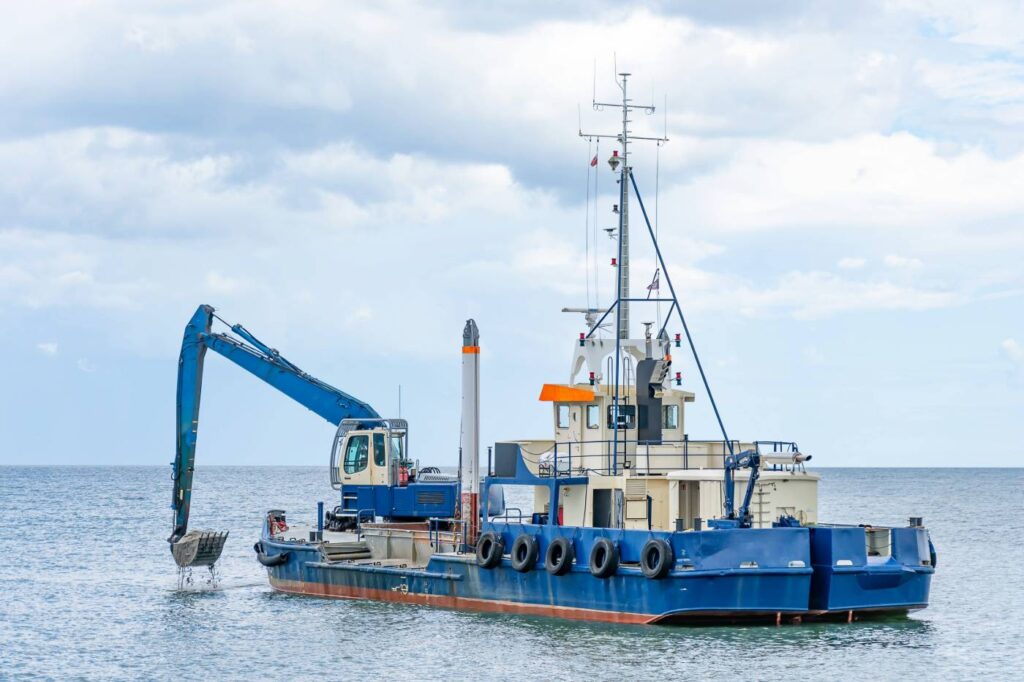
Maintenance dredging, while essential for ensuring navigable waterways and viable coastal infrastructures, can have substantial environmental impacts if not properly managed. Understanding these impacts, along with complying with established regulatory frameworks, is vital for responsible dredging operations.
Environmental Impacts Associated with Dredging Activities
Dredging operations can have a significant impact on marine ecosystems. Potential environmental concerns include sediment disturbance, water turbidity, habitat disruption for aquatic organisms, and the release of contaminants that were previously trapped in sediment layers. In particular, harbor dredging operations can release pollutants such as heavy metals or hydrocarbons, negatively impacting marine biodiversity and local water quality. Additionally, improper dredging practices can lead to shoreline erosion or negatively impact recreational beaches, directly affecting tourism and coastal economies.
Regulatory Frameworks Governing Maintenance Dredging
To mitigate environmental risks, several regulatory frameworks govern maintenance dredging operations. These regulations typically require comprehensive environmental assessments, sediment quality evaluations, and the implementation of approved dredging methods to minimize ecological disruptions. Agencies such as the U.S. Environmental Protection Agency (EPA), the Army Corps of Engineers, and local coastal authorities commonly oversee permitting processes, sediment management practices, and monitoring requirements. Complying with these regulations ensures that dredging activities are both environmentally responsible and compliant with the law.
Best Practices to Minimize Ecological Disruptions
Adopting best practices is critical to reducing the environmental footprint of dredging operations. Essential strategies include:
- Conducting thorough pre-dredging environmental assessments to understand potential impacts.
- Using dredging equipment and methods designed to minimize sediment disturbance and water turbidity.
- Implementing real-time monitoring systems to detect and immediately respond to adverse ecological impacts.
- Timing dredging activities carefully to avoid critical breeding and migration periods for marine and coastal wildlife.
- Ensuring effective communication and coordination with local environmental authorities and communities throughout dredging projects.
These practices help preserve marine habitats and protect water quality while enabling necessary harbor dredging and coastal infrastructure improvements.
Sustainable Sediment Management and Reuse in Beach Reclamation
Sustainable sediment management enhances the environmental and economic benefits of dredging projects. Repurposing dredged sediment, particularly sand, in beach reclamation projects significantly reduces environmental impacts by preventing unnecessary disposal in landfills or offshore sites. This approach replenishes eroded shorelines, reinforces coastal resilience, and enhances local biodiversity by restoring natural habitats. By aligning sediment reuse practices with ecological sustainability, maintenance dredging projects can make a positive contribution to environmental restoration and coastal protection objectives.
Innovations and Technological Advancements
Technological innovations have significantly transformed the practice of maintenance dredging, enhancing operational efficiency, minimizing environmental impacts, and improving the outcomes of dredging projects such as harbor dredging and beach reclamation. Advances in dredging technologies enable project managers to achieve greater precision, reduce costs, and implement more sustainable practices.
Advances in Dredging Technology: Improving Efficiency and Reducing Environmental Impact
Recent advancements in dredging technology have led to improved operational performance, including reduced energy consumption, minimized sediment dispersion, and increased accuracy in sediment recovery. Modern equipment designs incorporate more efficient hydraulic and mechanical systems, resulting in reduced fuel consumption and lower emissions. Additionally, enhanced sediment handling techniques reduce turbidity and prevent unnecessary disturbance to marine ecosystems, which is crucial for ecologically sensitive harbor dredging and coastal restoration projects.
Real-time Monitoring and GPS-Guided Dredging
Real-time monitoring systems combined with GPS-guided dredging equipment represent major technological improvements within the dredging industry. These systems offer precise positioning, accurate depth control, and continuous tracking of dredging progress. Operators can closely monitor sediment removal rates, sediment characteristics, and water quality parameters in real-time, allowing them to adjust their dredging strategies to minimize environmental impacts swiftly. This level of accuracy is especially beneficial for intricate projects, such as harbor dredging, where navigation accuracy directly impacts commercial operations and safety.
Eco-friendly Dredging Solutions
Eco-friendly dredging solutions are gaining prominence as regulatory requirements become tighter and public awareness of environmental conservation increases. Technologies such as environmentally sensitive dredging heads and sediment filtration systems effectively limit ecological disruption, particularly in delicate marine ecosystems. Moreover, these methods facilitate the sustainable reuse of sediment in beach reclamation initiatives, significantly reducing the need for offshore sediment disposal and contributing positively to coastal sustainability efforts.
Role of Automation and Artificial Intelligence in Modern Dredging Practices
Automation and artificial intelligence (AI) are increasingly shaping modern dredging practices by enhancing decision-making capabilities and operational consistency. AI-driven predictive analytics enable more accurate forecasting of sedimentation rates, facilitating more strategic scheduling of maintenance dredging operations. Automated dredging controls, guided by machine learning algorithms, further optimize dredging efficiency by adjusting equipment operation parameters dynamically, resulting in reduced labor costs, enhanced operational safety, and improved environmental compliance. The integration of AI technologies thus represents a crucial step forward in achieving sustainable, cost-effective dredging outcomes.
Planning and Project Management for Maintenance Dredging
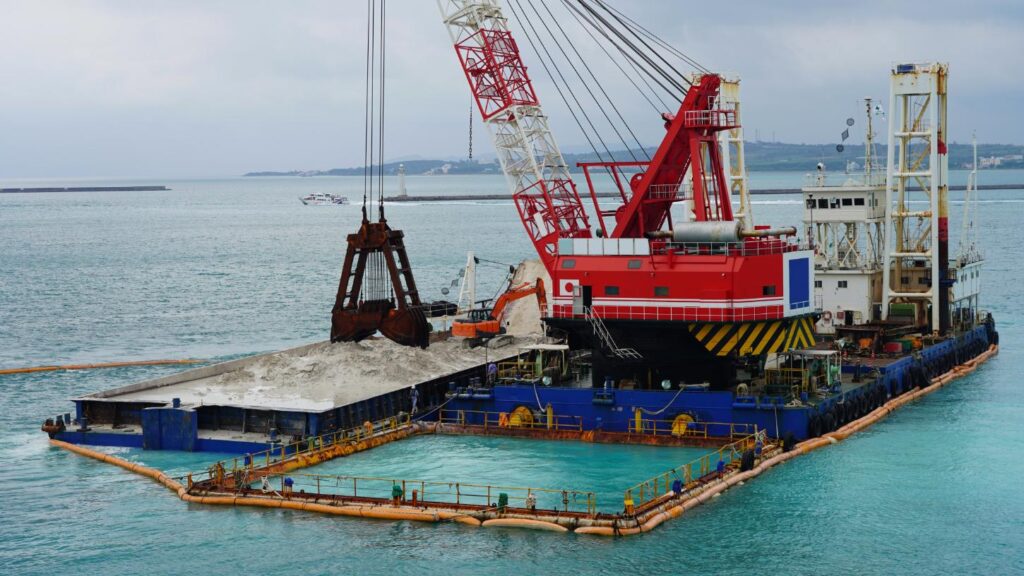
Effective planning and meticulous project management are crucial to the success of any maintenance dredging initiative. Proper planning not only optimizes operational efficiency but also ensures compliance with regulatory requirements, minimizes ecological impacts, and promotes stakeholder satisfaction.
Steps in Planning a Successful Maintenance Dredging Project
Successful planning for maintenance dredging typically involves several critical steps:
- Site Assessment and Feasibility Study: Conduct comprehensive surveys and sediment analysis to determine sediment type, quantity, potential contaminants, and dredging needs.
- Environmental and Regulatory Compliance: Obtain the necessary permits and approvals, ensuring that all dredging activities comply with environmental regulations. This is particularly important for harbor dredging and in sensitive coastal areas.
- Selection of Appropriate Techniques and Equipment: Evaluate dredging methodologies based on sediment type, project scale, and environmental constraints, to ensure both cost-effectiveness and operational efficiency.
- Budget Development and Funding Allocation: Establish accurate project budgets, including contingency funds for unforeseen expenses, and secure appropriate financing.
- Execution and Monitoring Plan: Develop a detailed operational plan outlining timelines, sediment management strategies, and environmental monitoring protocols.
Key Stakeholders Involved in Harbor Dredging and Beach Reclamation Projects
Multiple stakeholders typically collaborate in harbor dredging and beach reclamation projects, each with specific interests and responsibilities:
- Port Authorities and Harbor Managers: Responsible for overseeing operational efficiency, navigational safety, and harbor maintenance.
- Environmental Agencies: Provide regulatory oversight and ensure compliance with environmental standards.
- Local Governments and Municipalities: Oversee public infrastructure, local economic impact, and community safety.
- Marine Engineers and Dredging Contractors: Manage dredging operations, technical execution, and sediment handling.
- Local Communities and advocacy groups offer valuable insights and raise concerns related to environmental protection and community impacts.
Timeline Management and Contingency Planning
Robust timeline management is crucial for avoiding costly project delays, especially for large-scale projects like harbor dredging and coastal restoration initiatives. Clear scheduling that takes into account equipment availability, seasonal weather impacts, and environmental monitoring is critical. Contingency planning should be included to address unexpected challenges such as equipment breakdowns, adverse weather, or regulatory delays, ensuring projects remain on track even under unpredictable conditions.
Effective Communication Strategies with Local Communities and Regulatory Bodies
Effective communication is crucial to the success of maintenance dredging operations. Engaging proactively with local communities and regulatory authorities helps foster support, address concerns promptly, and maintain transparency. Recommended strategies include:
- Regular stakeholder meetings and public consultations.
- Clear dissemination of project objectives, timelines, and expected outcomes.
- Transparency about environmental assessments and mitigation measures.
- Establishing dedicated communication channels for ongoing feedback and updates.
Such open dialogue is especially valuable in beach reclamation projects, where community engagement directly influences public perception, acceptance, and project success.
Challenges and Solutions in Maintenance Dredging
Implementing effective maintenance dredging involves navigating several operational, environmental, and logistical challenges. Identifying and preparing for these obstacles ensures smoother project execution and better overall outcomes, particularly for sensitive applications such as harbor dredging and beach reclamation.
Identifying Common Challenges
Key challenges frequently encountered during maintenance dredging projects include:
- Sediment Contamination: Accumulated sediments, especially in harbor areas, may contain harmful contaminants such as heavy metals, hydrocarbons, or organic pollutants, requiring careful management to prevent environmental harm.
- Weather Disruptions: Unpredictable weather conditions such as storms, heavy rains, or strong currents often cause operational delays, equipment damage, or logistical disruptions.
- Regulatory Constraints: Stringent environmental regulations can impose restrictions on dredging timelines, techniques, sediment disposal methods, and overall project scope.
- Community Opposition: Local communities may express concerns over environmental impacts, noise disturbances, and potential economic disruptions, particularly during beach reclamation initiatives.
Practical Solutions to Overcome These Challenges
Addressing these challenges effectively requires proactive planning and targeted strategies:
- Sediment Testing and Management: Conduct comprehensive sediment quality assessments before dredging begins to detect contamination early. Contaminated sediments can be treated or isolated through specialized dredging equipment or designated disposal methods.
- Flexible Scheduling and Contingency Planning: Incorporating contingency plans into the project timeline helps manage delays due to weather. Scheduling dredging activities during seasons with favorable weather conditions can also minimize disruptions.
- Engagement with Regulatory Agencies: Early and frequent communication with regulatory bodies ensures a clear understanding and compliance with environmental requirements, reducing the likelihood of costly project delays.
- Transparent Community Communication: Building trust with local communities through open forums, public consultations, and clear communication about environmental safeguards and project benefits reduces opposition and promotes community support.
Special Considerations for Sensitive Areas
When conducting maintenance dredging in sensitive environments like marine protected zones, recreational beaches, and coastal habitats involved in beach reclamation, additional care is required:
- Environmental Monitoring: Implementing rigorous ecological monitoring programs helps detect potential negative impacts early, allowing for immediate corrective actions.
- Eco-friendly Equipment and Techniques: Employing dredging technologies designed to minimize sediment dispersion and water turbidity protects sensitive marine habitats.
- Timing of Operations: Scheduling dredging outside of critical periods for wildlife breeding, migration, and nesting ensures minimal disturbance to ecological processes.
- Beneficial Sediment Reuse: Using dredged materials sustainably for beach reclamation and shoreline restoration projects not only reduces environmental harm but also enhances local ecosystems and promotes coastal resilience.
Maintenance and Monitoring Post-Dredging
Post-project maintenance and monitoring are crucial components of successful maintenance dredging operations, ensuring sustained performance and environmental responsibility. Regular monitoring helps verify that dredging objectives have been achieved, identifies potential issues early, and contributes to the ongoing health and usability of dredged sites.
Importance of Post-Project Monitoring
Effective monitoring of dredged areas following maintenance dredging operations is essential to assess their stability and environmental impact. Continuous monitoring provides valuable data on sediment reaccumulation rates, water quality changes, and habitat recovery, particularly in sensitive locations such as harbor dredging areas and sites designated for beach reclamation. Early detection of problems allows for timely interventions, preventing small issues from becoming costly or environmentally harmful over the long term.
Best Practices for Maintaining Dredged Sites
Maintaining dredged sites effectively requires following proven best practices:
- Routine Site Inspections: Regular visual and bathymetric surveys ensure that sediment levels remain within desired specifications, facilitating timely corrective actions if sedimentation occurs again.
- Sediment Monitoring Programs: Implementing periodic sampling and analysis helps identify the quality of sediment accumulation and potential contamination issues, crucial for busy commercial ports and recreational beaches.
- Environmental Assessments: Regular ecological assessments, particularly at sites involved in beach reclamation, help evaluate ongoing environmental health, progress in habitat restoration, and shoreline stability.
- Adaptive Maintenance Scheduling: Developing flexible maintenance schedules based on ongoing monitoring data ensures dredging is performed proactively rather than reactively, optimizing resource use and minimizing disruptions.
How Regular Maintenance Reduces Long-Term Costs and Environmental Impacts
Regular maintenance not only preserves the operational efficiency of dredged sites but also significantly reduces long-term costs. By addressing sediment buildup proactively, authorities can avoid more expensive, large-scale emergency dredging operations. Furthermore, continuous, planned maintenance minimizes negative environmental impacts by reducing sediment dispersion and protecting local ecosystems. Regularly maintaining harbor dredging areas supports ongoing commercial activities and maritime safety. At the same time, consistent sediment management enhances the effectiveness and longevity of beach reclamation projects, ultimately promoting coastal resilience and sustainability.
Conclusion
Effective maintenance dredging is crucial for maintaining navigable waterways, supporting harbor operations, and facilitating critical coastal management initiatives, including harbor dredging and beach reclamation. By carefully selecting appropriate dredging techniques, proactively managing costs, ensuring regulatory compliance, and integrating sustainable practices, project managers and stakeholders can achieve lasting economic and environmental benefits. Continued innovation, diligent planning, and regular post-dredging maintenance further ensure the long-term success and sustainability of dredging projects, promoting safe navigation, thriving marine ecosystems, and resilient coastal communities.
